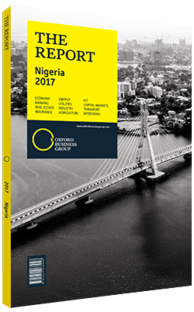Increased use of electronic banking in Nigeria
While Nigeria’s economy remains largely cash-based, there has been an increased focus since 2012 on reducing inefficient cash transactions. According to the Central Bank of Nigeria (CBN), an excess of currency in circulation has hindered plans to stabilise prices. In addition, the costs associated with currency sorting, cash management, transport and frequent printing have also kept bank service fees and lending rates high.
Having such a substantial volume of cash-based transactions has had an effect on the industry, with the CBN estimating that the direct cost of cash management to the banking sector was N192bn ($678.5m) in 2012, on top of other associated risks such as mishandling of notes, robbery and corruption. In order to address some of the concerns, the central bank has implemented a number of cashless polices.
Following on from an initial strategy in 2011, the CBN announced that it planned to expand its cashless policy to all states by October 2017. This includes a series of service charges and fees designed to discourage individuals and businesses from carrying and using cash. Withdrawals exceeding N500,000 ($1770) from an individual and those of more than N3m ($10,600) from a corporate body attract a service charge.
Extra Benefits
The shift towards an increase in cashless transactions offers a range of additional benefits on top of improved efficiency. For example, the rise of mobile money has proven to be an effective means of increasing financial inclusion among lower-income and geographically remote populations. Second, the large, cash-based informal economy in Nigeria has resulted in a large portion of the money supply sitting outside of the formal financial system, posing a substantial obstacle to the central bank’s efforts to execute monetary policy. Therefore, the promotion of cashless banking has the potential to alleviate some of the problems associated with this issue, and has generated some positive results, with electronic payments increasing in recent years. The value of overall electronic payments grew by 88% between 2012 and 2016, rising from N27.6trn ($97.5bn) to N51.8trn ($183bn). A further breakdown of the statistics shows that ATM transactions almost doubled over the same period, up from N2trn ($7.1bn) to N3.9trn ($13.8bn). Meanwhile, point-of-sale transactions grew from N48.5bn ($171.4m) to N521.7bn ($1.8bn) a 10-fold increase. While Nigeria is certainly making advances in its efforts to reduce the scale of cash transactions, there is still much more progress to be made. For example, although the value of cheque transactions has dropped by 36% since 2012, they still accounted for N4.8trn ($17bn) in 2016, significantly more than other forms of non-cash transactions.
Infrastructure
Nigeria’s cashless programme relies heavily on modernising payment infrastructure, which could pose a significant challenge in a 180m-person economy. “If you are in the urban areas, you feel the effects of the cash-lite shift, but if you move outside of Lagos or any of the other major cities, you find that cash is still king,” Olubunmi Asaolu, head of equity research at FBN Capital, told OBG.
Mobile Money
Mobile money is another key tool towards cultivating cashless transactions. However, uptake has been slower than in other African markets. Unlike in Kenya – the inaugural M-Pesa mobile money programme now handles transactions equivalent to around one third of the country’s GDP – where the initiative was driven by telecoms providers, the CBN has mandated that mobile money efforts be led by the banking sector, which some believe will slow mobile money innovation. Nnaemeka Nwachukwu, head of executive support at the Grooming People for Better Livelihood Centre, a Lagos-based microfinance institution, told OBG, “Here in Nigeria, the CBN wants mobile money initiatives to be bank-led and bank-based. The banks all have their mobile apps, but they are not accessible without a smartphone.” This approach could slow growth in mobile money initiatives, with Nigeria’s smart-phone penetration rate currently at approximately 30%.
You have reached the limit of premium articles you can view for free.
Choose from the options below to purchase print or digital editions of our Reports. You can also purchase a website subscription giving you unlimited access to all of our Reports online for 12 months.
If you have already purchased this Report or have a website subscription, please login to continue.

